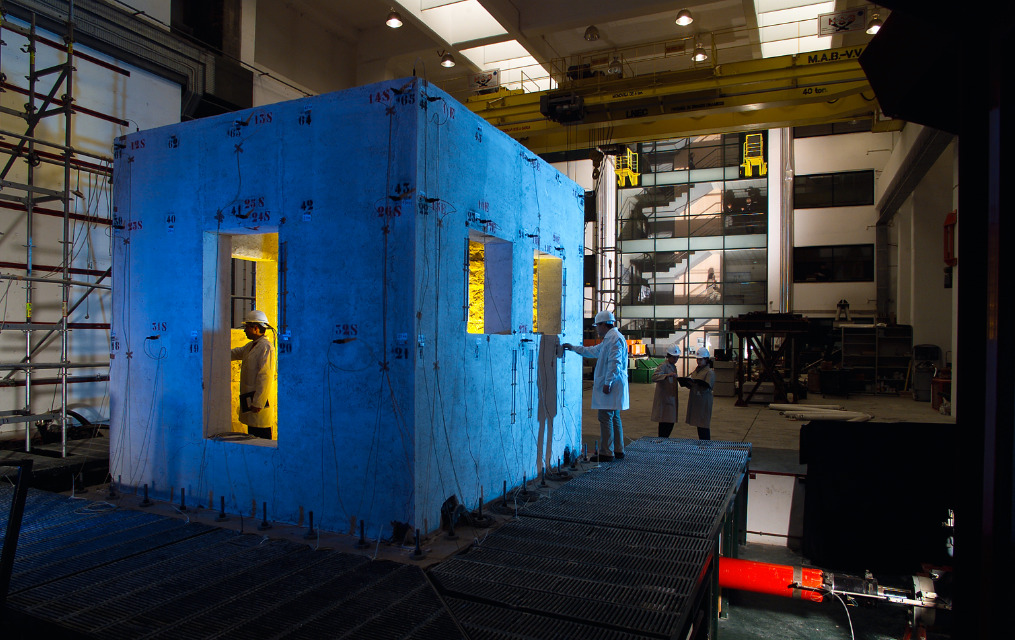Triaxial

The Structural Dynamics Laboratory (UDinE) is part of the Earthquake Engineering and Structural Dynamics Unit, which is integrated in LNEC’s Structures Department, being equipped with the experimental infrastructures necessary for the development of R&D&I activities.
Additional information can be found at this laboratory's flyer.
Field of expertise
The main activity of UDinE consists of the characterization of the seismic behavior and vulnerability of large structures subjected to seismic actions of different intensities until imminent global collapse of structures or substructures.
Testing
LNEC-3D shaking table
The LNEC-3D shaking table, on which the models to be tested are placed and fixed, has the shape of a triangular prism with the following characteristics:
- dimensions 6,4x5,6 m2;
- maximum capacity of 40 tons;
- three independent orthogonal axes;
- displacements controlled actively, passively restricted rotation (torsion bars)
- frequency range of 0 to 40 Hz.
R&D&I experimental studies
Seismic testing of modern and traditional construction techniques and structural typologies, or for the assisted development of strengthening and seismic rehabilitation techniques, of complete structures close to real scale (1:1,5 to 1:2) or of full-scale substructures.
Seismic testing for the experimental evaluation and assisted development of both passive and semi-active systems intended to mitigate seismic stresses in structures.
Seismic qualification studies
Dynamic testing for the seismic qualification of equipment and components used by electricity producers and distributors.
Other services
UDinE conducts consultancy studies to assess the seismic vulnerability of important structural systems or components (e.g., buildings and bridges) using performance-based methodologies with previously defined design objectives and performance requirements. These studies are based on the experimental characterization of the dynamic behaviour of structures, essential for the implementation of retrofitting solutions for the mitigation of seismic vulnerability for one or more of the performance objectives established.
